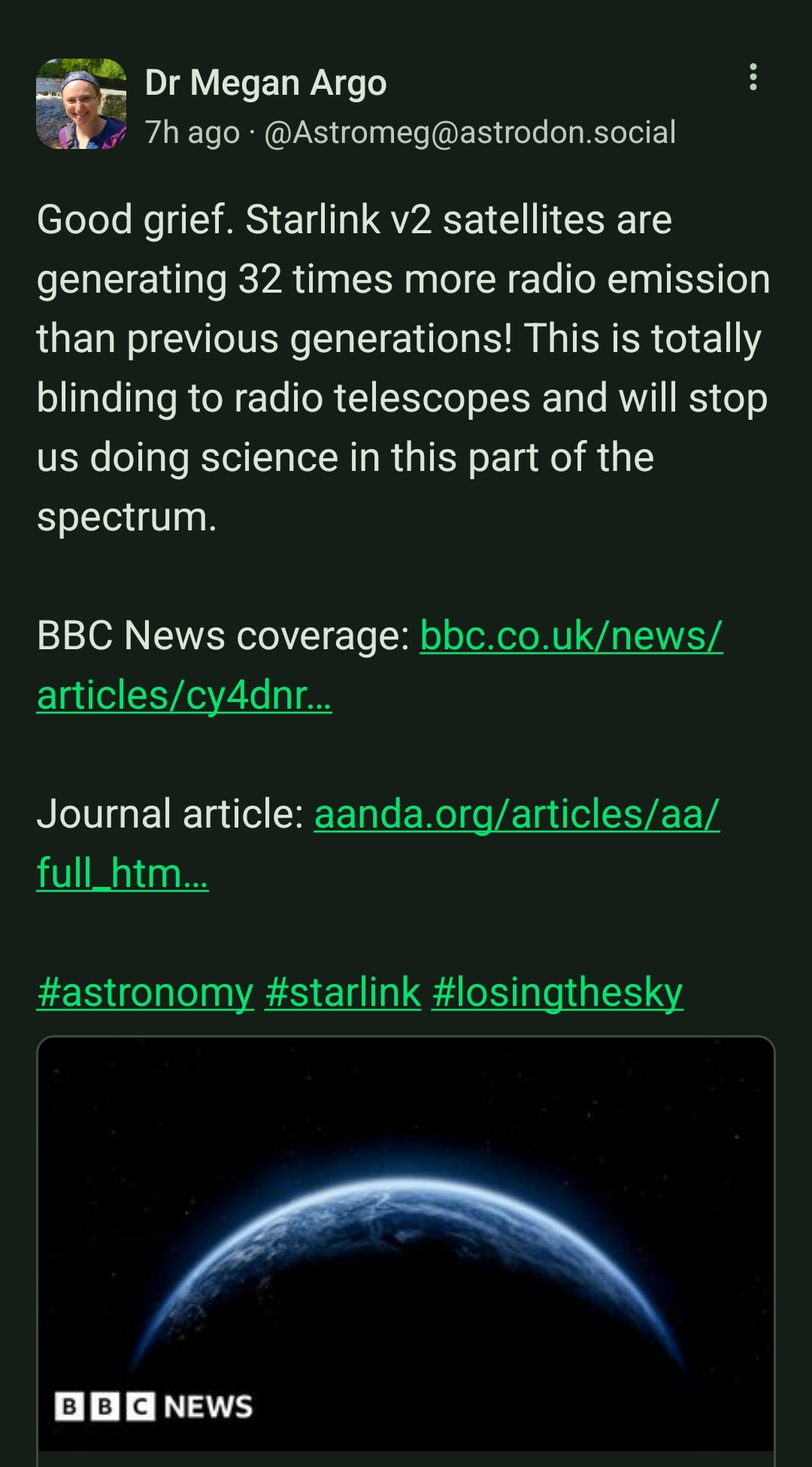this post was submitted on 18 Sep 2024
1219 points (97.4% liked)
Microblog Memes
6638 readers
4108 users here now
A place to share screenshots of Microblog posts, whether from Mastodon, tumblr, ~~Twitter~~ X, KBin, Threads or elsewhere.
Created as an evolution of White People Twitter and other tweet-capture subreddits.
Rules:
- Please put at least one word relevant to the post in the post title.
- Be nice.
- No advertising, brand promotion or guerilla marketing.
- Posters are encouraged to link to the toot or tweet etc in the description of posts.
Related communities:
founded 2 years ago
MODERATORS
you are viewing a single comment's thread
view the rest of the comments
view the rest of the comments

Pieces don’t gain kinetic energy in a collision. Even if they collide and get sent off in an “upwards” direction, it’s not up very far relative to the orbit, and that’s just a less circular orbit at lower speed that will burn up even faster
For you scenario to work, there would have to be a chain reaction
Each chance is remote enough, and ricocheting pieces only go so far, and any higher satellites they could reach are also low orbit, that I can’t imagine how remote the chances of this happening are
Kessler syndrome is a real worry, but not in this low orbit